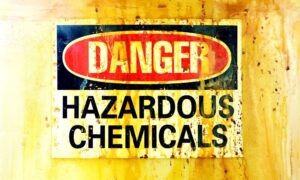
Industrial metal hoses are essential for fluid transfers, but choosing the wrong hose can lead to disastrous consequences. Incompatible chemicals can corrode the hose, causing leaks, spills, and equipment damage. This not only disrupts operations but also poses serious safety and environmental hazards.
To avoid these risks, you need to know how different chemicals interact with various hose materials. This post will guide you through the essential factors to consider when selecting the right industrial metal hose for your specific application.
J.W. Roberts is your expert source for a wide range of industrial metal hoses. Contact us today for personalized assistance.
Understanding Chemical Compatibility
Chemical compatibility refers to how well a hose material withstands the effects of the chemicals it carries. But this compatibility isn’t just about the chemical itself. Several factors influence how a chemical interacts with a hose:
- Concentration and Temperature: Stronger chemical solutions and higher temperatures generally increase corrosivity. For example, hot, concentrated acid will eat through material faster than a diluted solution at room temperature.
- Exposure Time: The longer a hose is exposed to a chemical, the more likely it is to degrade. Even a “compatible” material can weaken over time with prolonged exposure.
- Chemical Mixtures: Mixing different chemicals can create unexpected reactions and increase corrosivity. It’s essential to consider the combined effects of all chemicals present.
Common Industrial Chemicals
Industrial processes rely on a variety of chemicals, many of which are highly corrosive. Understanding their properties is key to selecting the right hose.
Acids
These are some of the most common and corrosive substances used in industries.
Sulfuric acid: Widely used in battery manufacturing, fertilizer production, and metal processing. It’s highly corrosive to many metals, especially at high concentrations.
Hydrochloric acid: Used in steel pickling, oil well acidizing, and the production of PVC. It readily attacks many metals, including stainless steel.
Nitric acid: A powerful oxidizing agent used in the production of fertilizers, explosives, and dyes. It can cause rapid corrosion of many metals, including stainless steel.
Alkalis
Also known as bases, these substances are highly reactive and can cause severe burns.
Sodium hydroxide: Used in paper production, soap manufacturing, and drain cleaning. It’s highly corrosive to aluminum and zinc.
Potassium hydroxide: Used in fertilizer production, batteries, and as a cleaning agent. Similar to sodium hydroxide, it attacks aluminum and zinc.
Solvents
These are organic compounds used to dissolve other substances.
Acetone, toluene, xylene: Common solvents used in paints, adhesives, and cleaning agents. While not as corrosive as acids or alkalis, they can degrade certain hose materials, causing swelling or cracking.
Salts: While not inherently corrosive in their dry form, salts can become highly corrosive in the presence of moisture.
Sodium chloride, calcium chloride: Used in de-icing, water treatment, and food processing. They can accelerate corrosion, especially in environments with high humidity or condensation.
Oxidizers
These substances readily react with other materials, causing oxidation and corrosion.
Hydrogen peroxide, chlorine: Used in bleaching, disinfection, and water treatment. They can be highly aggressive towards many hose materials, especially at high concentrations.
Types of Corrosion in Industrial Metal Hose
Uniform Corrosion: This is the most common and predictable type. Imagine a metal plate slowly rusting over time – that’s uniform corrosion. The material degrades evenly across the surface, thinning the metal. While it can lead to eventual failure, it’s relatively easy to monitor and predict its progression.
Pitting Corrosion: This is more insidious. Over time, tiny holes appear on the surface of the hose. These pits concentrate the corrosive attack, penetrating the material faster than uniform corrosion. The difficulty is that these pits can be hidden under corrosion products or within the hose structure, making them difficult to detect. Even a small pit can significantly weaken the hose, leading to unexpected leaks or bursts.
Stress Corrosion Cracking: This type of corrosion is particularly dangerous because it combines the effects of stress and a corrosive environment. Imagine a hose under pressure, constantly flexing and vibrating. Over time, tiny cracks can develop in the material, especially in areas of high stress concentration. These cracks then become focal points for corrosion, propagating deeper into the material. The result is sudden and catastrophic failure, often with little warning.
Metal Options for Industrial Hose Used in Chemical Transfer
Stainless Steel: This is a popular choice for its excellent corrosion resistance and durability. Different grades offer varying levels of protection. 304 stainless steel is suitable for many general applications. 316L stainless steel offers enhanced resistance to chlorides and acids, making it ideal for more demanding environments.
Carbon Steel: This is a more economical option, but it’s more susceptible to corrosion, especially in harsh environments. It may be suitable for less aggressive chemicals or applications with shorter exposure times.
Exotic Alloys: For highly corrosive chemicals, specialized alloys like Hastelloy or Monel offer superior resistance. These materials can withstand extreme temperatures and highly concentrated chemicals, but they come at a premium cost.
Beyond the base material, consider the hose construction:
- Hose Lining: A PTFE or PFA lining can provide an additional barrier against corrosive chemicals, extending the hose’s life.
- Reinforcement: Braided or spiral reinforcements enhance the hose’s pressure rating and structural integrity.
- End Fittings: Choose fittings made from compatible materials to avoid galvanic corrosion where different metals meet.
Expert Advice – Industrial Metal Hose and More
Choosing the right industrial metal hose can be complex. J.W. Roberts offers a wide range of high-quality hoses and expert guidance to ensure compatibility for your specific application. Contact us today for more assistance or to place an order.
